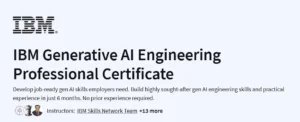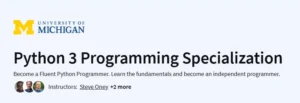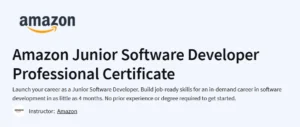What you will learn in Introduction to User Experience Design Course
- This course offers a comprehensive introduction to User Experience (UX) Design, focusing on user-centered design principles.
- Learners will explore the four-step user interface design cycle: requirement gathering, designing alternatives, prototyping, and evaluation.
- The curriculum emphasizes systematic and data-driven design processes to create effective, efficient, and satisfying user experiences.
Students will gain hands-on experience with techniques such as naturalistic observation, surveys, interviews, and usability testing.
The course also covers ethical considerations in user engagement and the importance of designing with the user’s needs in mind.
Program Overview
Overview of User Experience Design
⏱️1 hours
Introduction to key UX design concepts and terminology.
Examination of features that contribute to good design.
Discussion on ethical considerations in user engagement.
Requirement Gathering
⏱️ 1 hour
Techniques for understanding user needs and tasks, including naturalistic observation, surveys, interviews, and focus groups.
Methods for effectively presenting findings from user research.
Designing Alternatives
⏱️1 hours
Strategies for generating multiple design solutions.
Exploration of conceptual models and design metaphors.
Application of design principles to create user-centered interfaces.
Prototyping
⏱️1 hours
Overview of prototyping methods and tools.
Development of low-fidelity and high-fidelity prototypes.
Importance of iterative design in refining user interfaces.
Evaluation
⏱️1 hours
Techniques for assessing design effectiveness, including heuristic evaluation and usability testing.
Methods for collecting and analyzing user feedback to inform design improvements.
Get certificate
Job Outlook
The demand for UX designers is projected to grow significantly as companies prioritize user-centered design to enhance customer satisfaction.
UX design skills are highly sought after in various industries, including technology, healthcare, finance, and e-commerce.
Entry-level UX designers can expect competitive salaries, with opportunities for advancement into senior design and managerial roles.
Proficiency in UX design principles and tools can lead to roles such as UX Designer, Interaction Designer, and User Researcher.
The comprehensive skill set acquired through this course enhances employability in the rapidly evolving field of user experience design.
Specification: Introduction to User Experience Design
|
FAQs
- The course is beginner-friendly, with no prior experience required—perfect for newcomers.
- It introduces a clear 4-step design process: requirement gathering → designing alternatives → prototyping → evaluation.
- You’ll learn basic UX deliverables like prototypes, interface planning, and usability testing through hands-on assignments.
- It’s incredibly short—around 6 hours total—so easy to complete and explore UX without a heavy time investment.
- You’ll complete five assignments, each tied to a module and centered on core UX methods like interviews, prototyping, and usability testing.
- Modules guide you through practical UX steps: gathering requirements, designing alternatives, prototyping, and evaluating designs.
- Assignments are meant to simulate real design tasks—like presenting findings from user observations or wireframing solutions.
- The inclusion of readings, videos, and reflective tasks ensures concepts are grounded in real-world thinking, not just theory.
- Officially, it’s just 6 hours, with an estimated pace of 2 hours over 3 weeks.
- The schedule is fully self-paced, so you can breeze through in a weekend or stretch it out over several weeks.
- With just 6 modules, it’s easy to weave into a busy schedule—no long-term commitment needed.
- Because it’s short and flexible, great for dipping your toes into UX quickly.
- You’ll learn core UX practices—user-centered design, prototyping, usability testing, and requirements gathering.
- The course emphasizes a systematic, data-driven design cycle, not just flashy UI aesthetics.
- Feedback from CourseEye highlights its use of real-world techniques, step-by-step guidance, and preparation for iterative design.
- While foundational, it gives you concrete experience with UX thinking, not just terminology.
- On Reddit, users mention how the course familiarizes them with UX terminology and thinking without much effort, praising how “you get familiar with the terminology, the thinking and so on.”
- Another learner said: “I took the introduction course… it didn’t require a lot of time or effort yet got me familiar with the terminology, the thinking and so on.” — pointing to its suitability as a quick starter.
- Reviewers highlight clarity: one commented, “As a novice I’ve found this course to be clear and concise… useful and usable.”





